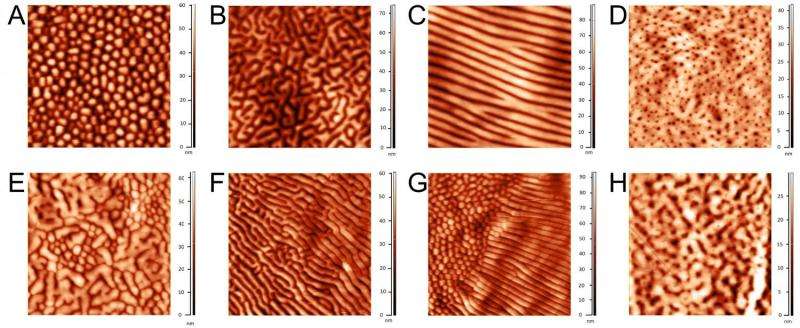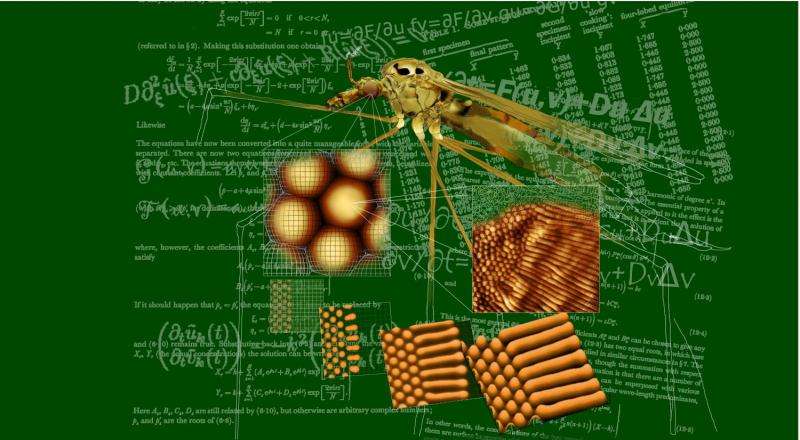Phenomenon described by Alan Turing explains anti-reflective insect eyes

In 1952, the legendary British mathematician and cryptographer Alan Turing proposed a model that assumes formation of complex patterns through chemical interaction of two diffusing reagents. Russian scientists managed to prove that the corneal surface nanopatterns in 23 insect orders completely fit into this model.
Their work is published in the Proceedings of the National Academy of Sciences.
The study was conducted by a team working in the Institute of Protein Research of the Russian Academy of Sciences, (Pushchino, Russia) and the Department of Entomology at the Faculty of Biology of the Lomonosov Moscow State University.
The initial goal of the study was to characterize the anti-reflective, three-dimensional nanopatterns covering insect eye cornea with respect to the taxonomy of studied insects and to get insight into their possible evolution path.
The result was surprising, as the pattern morphology did not correlate with insect position on the evolutionary tree. Instead, Russian scientists have characterized four main morphological corneal nanopatterns, as well as transition forms between them, omnipresent among the insect class. Another finding was that all the possible forms of the patterns directly matched to the array of patterns predicted by the famous Turing reaction-diffusion model published in 1952, which the Russian scientists confirmed not just through mere observation, but by mathematical modeling, as well. The model assumes formation of complex patterns through chemical interaction of two diffusing reagents.

The analysis has been performed by means of atomic force microscopy with resolution up to single nanometers. "This method allowed us to drastically expand the previously available data, acquired through scanning electron microscopy; it also made it possible to characterize surface patterns directly, not based upon analysis of metal replicas. When possible, we always examined corneas belonging to distinct families of one order to get insight into intra-order pattern diversity," says researcher Artem Blagodatskiy.
The work illuminates the mechanisms underlying the formation of biological three-dimensional nano-patterns, demonstrating the first example of the Turing reaction-diffusion model acting in the bio-nanoworld.
Interestingly, the Turing nanopatterning mechanism is common not only for the insect class, but also for spiders, scorpions and centipedes—n other words, it seems to be universal for arthropods. Due to the anti-reflective properties of insect corneal nanocoatings, the revealed mechanisms are paving the way for the design of artificial anti-reflective nanosurfaces.
"A promising future development of the project is a planned genetic analysis of corneal nanopattern formation on the platform of the well studied Drosophila melanogaster (fruit fly) model. The wild-type fruit flies possess a nipple-array type nanocoating on their eyes, says Blagodatskiy.
Different combinations of overexpressed and underexpressed proteins known to be responsible for corneal development in Drosophila may alter the nipple pattern to another pattern type, and thus shed light on the chemical nature of the compounds forming the Turing-type structures on insect eyes. Revealing proteins and/or other agents responsible for nanopattern formation could lead to artificial design of nanocoatings with desired properties. The researchers also hope to conduct a comparison of anti-reflective features of different types of characterized nanocoatings.
More information: Proceedings of the National Academy of Sciences, www.pnas.org/cgi/doi/10.1073/pnas.1505748112
Journal information: Proceedings of the National Academy of Sciences
Provided by Lomonosov Moscow State University




















